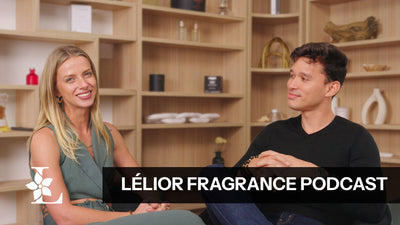Dawn breaks differently in Pégomas, France.
The Mediterranean air hangs with a distinctive moisture as the first rays of sunlight pierce through the hills of Grasse. These acres of countryside represent perfume royalty's ancestral home, where Chanel's most precious fragrance ingredients are born.
How Chanel Harvests Jasmine and Roses in Grasse
Bicycles with wicker Chanel baskets line up neatly outside a stone bastide. Harvesters move with precision through fields of jasmine and roses, their fingers gracefully dancing across the branches.
One of the most fascinating things to note is that piano melodies flood the fields three times daily—not just for beauty, but purpose. Sound frequencies naturally combat fungi and rust, protecting the blooms without chemicals. Science disguised as a sonata.
The 8,000-Flower Equation Behind Chanel No. 5
It takes a staggering 8,000 hand-picked jasmine flowers to create just one kilogram of raw material. So the next time you pour yourself a drop of Chanel No. 5, know that you're experiencing the essence of 1,000 jasmine blossoms in just a 15ml bottle.
The harvesters work with efficiency, each collecting about 350 grams hourly, always racing against the climbing sun. As Fabrice Bianchi explains, "If it gets too hot, the volatile scent gets lost." Bianchi helps manage the sprawling 30-hectare operation that has been Chanel's trusted partner since 1987.
From Flower to Fragrance: Chanel's Extraction Process
By 1pm, the morning's treasure is weighed and rushed to extraction facilities. The flowers—whether May roses blooming just three weeks annually or jasmine harvested August through October—transform into something resembling caramel-colored fudge called "concrete."
This waxy substance, refined into "absolute," becomes the concentrated essence that reaches your vanity as Chanel No. 5, a fragrance born when Gabrielle Chanel encountered perfumer Ernest Beaux and famously demanded: "Put more of it in."
Olivier Polge: The Master Perfumer Behind Chanel's Fragrances
Olivier Polge, Chanel's fourth in-house nose, describes working with jasmine as incorporating "perfume itself into your fragrance." Grasse's Jasminum grandiflorum carries a distinctive softness with green tea undertones, the signature of this microclimate that turned the region into perfumery's capital since the 17th century.
"A good perfume must build a story, memories, and a dream," Polge reflects. "It must have such a strong personality that you recognize it among hundreds. It must last and never become tiresome."
Sustainable Luxury: How Chanel Plans for Climate Change
Perfumery at this level means planning 5-10 years ahead. When Indian sandalwood became unusable, Chanel pivoted to New Caledonia. Climate change presents similar challenges, with the Mul family adapting cultivation techniques to preserve this fragrant ecosystem.
Each morning's harvest oxidizes quickly, resulting in a brutally small window to capture nature's ephemeral gift. Visit a rose field before lunch, return after, and you'll find bare green bushes where pink blossoms once nodded.
The Mul Family: Chanel's Partner in Preserving Perfume Heritage
The partnership between the 5th-generation Mul family (operating these fields since 1840) and Chanel balances tradition and innovation. UNESCO recognized this cultural treasure with World Heritage status.
Far from faceless luxury conglomerates, this operation thrives through relationships. It connects deeply with the land, honors the workers who understand each plant's needs, and ultimately touches everyone who catches the distinctive whisper of Chanel No. 5 across a crowded room.
Why Chanel's Grasse Flower Fields Matter for Luxury Perfume
These fields embody a rare authenticity in today's world, encapsulating luxury defined by generations of expertise rather than clever marketing. Here, quality means patience: waiting for perfect blooms, capturing their essence at precisely the right moment, and refining techniques across centuries.
When sunset bathes the harvested fields in golden light, visitors connect with something truly timeless. In an age of synthetic shortcuts, these meticulously tended flowers stand as living monuments to tradition—where excellence remains the only acceptable standard, regardless of cost or convenience.








